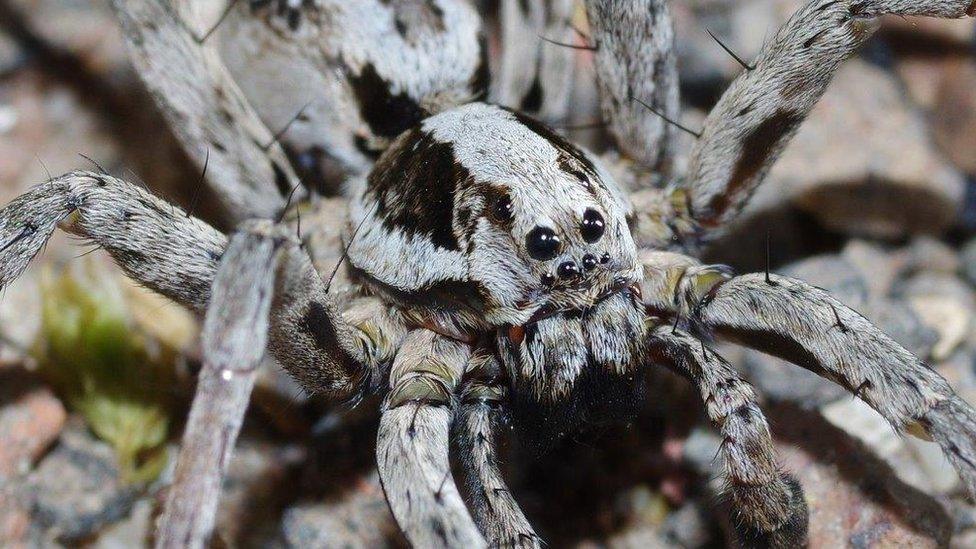Great fox-spider rediscovered on MoD land in Surrey
- Published

The great fox-spider has eight eyes - two on top of its head, two at the front, and four just above its mouth
One of Britain's most endangered spiders has been seen for the first time in a generation.
The great fox-spider is listed as critically endangered and was feared extinct in the UK.
It had only ever been found at three sites, in Dorset and Surrey, and had not been seen since the early 1990s.
Mike Waite, who rediscovered the spiders on a Ministry of Defence (MoD) training area in Surrey, said he was "over the moon".
The arachnid enthusiast initially found some unidentifiable immature spiderlings on the site, managed by the Amphibian and Reptile Conservation Trust, after "many hours of late night searching with a torch over the last two years".
The discovery then led to several mature males and a female.
Mike Waite said he had spent many hours at night searching for the spider with a torch
The great fox-spider, Alopecosa fabrilis, lives on the ground and is largely nocturnal. It is one of the largest of the wolf spider, Lycosidae, family of spiders.
According to the Surrey Wildlife Trust, it has excellent eyesight - with wrap-around vision provided by eight black eyes - and captures insects at speed by chasing them across sandy terrain, over gravel and rocks before pouncing.
Mr Waite, of the Surrey Wildlife Trust, said: "I am naturally over the moon to have finally proved the continued existence of the great fox-spider in the UK.
"Although I've always held a latent interest in spiders, as a bona-fide arachnologist, I am still a relative newbie, so am doubly pleased to have made this important contribution to our scientific knowledge."
Nick Baker, naturalist, TV presenter and president of the British Arachnological Society, said the spider was "mega", adding: "It's about as handsome as a spider gets, it's big and now it's officially a member of the British fauna again."
Mr Waite said he was "over the moon" to have proved the continued existence of the spider in the UK